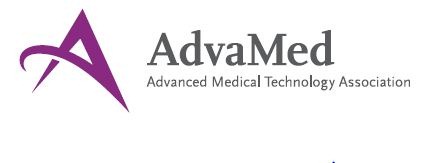
To: The Members of the Arizona House Delegation
From: The Members of the Arizona Bioscience Industry
RE: Proposed lowering of the ASP percentage from 6% to 4% could have dangerous side effects and information in support of the Lance/Pascrell letter that is being circulated.
We have a lot of things that need fixing at the moment as the financial burden our country bears comes under further review and adjustments. Many of our systems are broken, but some are working. ASP and Medicare Part B is a case in point.
In keeping with the Arizona BioIndustry Association’s commitment to monitor key issues and to share key information on areas that affect our community, our state and our nation, the following points are offered to assist you on how best to control healthcare costs and protect jobs while serving the best interests of millions of Americans and tens of thousands of Arizonans who are touched directly or indirectly by the current ASP rates and the Medicare Part B Program.
HISTORY/BACKGROUND: ASP and Biologics:
Biologics are used to treat some of the most serious diseases. Many of these products are infused directly into the patients’ blood stream and require administration in a physician’s office because of their complexity and the need to monitor how the patient is responding. Medicare pays for these products under Part B of the statute and pay for the product at the average sales price plus a physician add-on that covers the handling and administration of the product. This system was created as a replacement to the old system in order to better reflect the cost of the products. The change in the program is estimated to have saved $16 billion since the MMA was implemented in 2005.
ASP+6% is working well and there is no policy argument for reducing the add-on payment down to 3%. MedPac, which makes recommendations to Congress on CMS policy, has found that the 6% is an adequate payment level. The only reason to dial down the % is to save the government money, approximately $3 billion but is unlikely to be a true savings as these costs will reappear in other places.
Some providers, especially in rural areas, are already struggling. Many of these providers are small businesses that provide lifesaving medical services in their communities. Passing the cost burden to these small companies could result in curtailment of their service offerings in their communities. As services are cut back, jobs are lost.
Dialing down the percentage has the potential to really disrupt the delivery system, creating potential access problems for patients and ultimately costing the government more as these patients end up in the hospital for either the initial treatment or complications caused by limited access to these treatments and
services that land them in the hospital with more serious problems later.
In addition, the regulatory changes that would be needed to implement this change may face significant hurdles in implementation during the Regulatory Flexibility Review. As you know, The Regulatory Flexibility Act, which was created in 1980 and amended in 1996, requires federal agencies to assess the economic impact of proposed and existing regulations on small businesses. Rules found to be too burdensome must be replaced with alternatives. A government mandated profit margin that falls below the operating costs of these small businesses will effectively drive small business providers out of the market as they would not be able to sustain operations at this level or compete with large businesses that have other areas where they can shift costs to keep their operations solvent.
The 6% is not all profit for these providers. Within that they have to deal with numerous factors critical for their business model including the prompt pay discount, bad debt, handling and administration and others. Lowering the add-on will force certain providers to no longer take Medicare patients, forcing them into the hospital setting which is more expensive and less convenient.
This sort of disruption, to a system that is working, for a cost saving estimated at $3 billion over 10 years will have dangerous side effects for little to no real benefit. This is basically a rounding error in the larger healthcare cost and budget debate and once the unintended consequences to small businesses, jobs, and patient access are added in potentially a net increase healthcare costs and yet another hurdle for businesses of all sizes as we strive for economic recovery.
As I shared in the beginning, ASP and Medicare Part B is Working. It has allowed us to reduce healthcare costs and through the products it covers stimulate innovation and create jobs. The current 6% level offers a slim but manageable profit margin for small business providers. Fixing a system that is not
broken could negatively impact thousands of Arizonans and millions of Americans. I know you have a lot on your plate in solving the financial challenges our country is facing. Perhaps it is time to take changes to the ASP+6% Rate and Medicare Part B off the “fix it list” and use our scarce resources to address other challenges that can truly use the help.
On behalf of the Arizona BioIndustry and our community, I thank you for taking the time to read this letter and for doing what is best for all of us.
Sincerely,
Joan Koerber-Walker
President and CEO
AZBio – The Arizona BioIndustry Association
SkySong, 1475 N. Scottsdale Road, Scottsdale, AZ 85257




